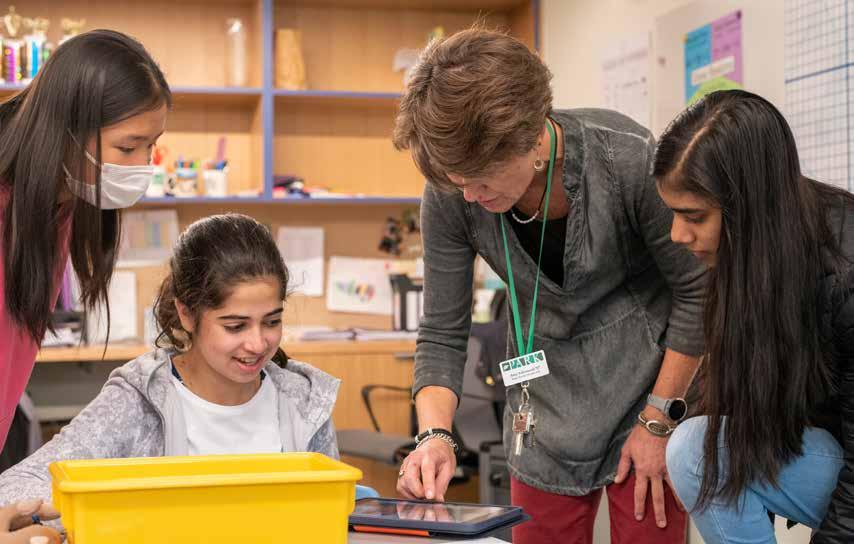
10 minute read
Think Differently - Confidence and Discovery in Park's Math Department
Confidence and Discovery in Park’s Math Department
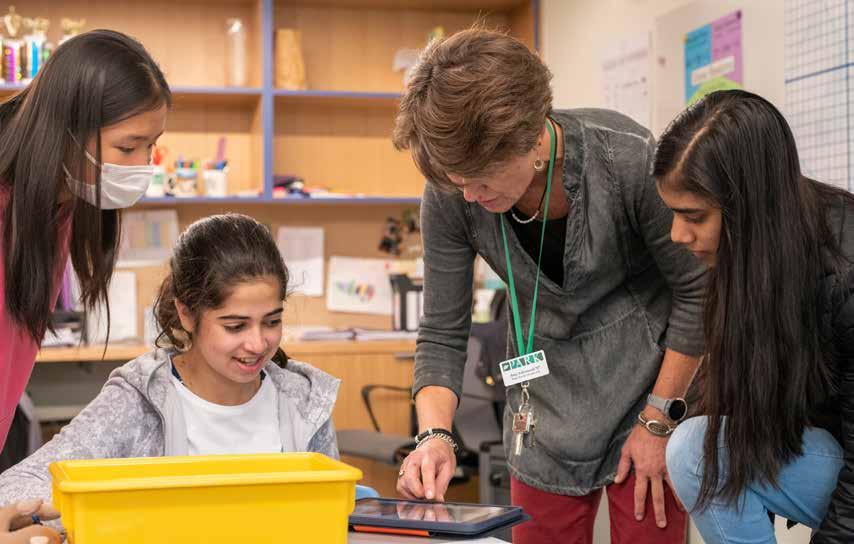
By Suzy Akin Director of Strategic Marketing & Communications
The story goes that back in 1911, years before he founded the company that became IBM, Thomas J. Watson was frustrated by the lackluster contributions of his colleagues at a meeting. Calling them out for not using their heads, he wrote the word THINK on an easel. The slogan traveled with him through the years and became a familiar brand statement for IBM. Watson refused to get any more specific than this single word, saying “By THINK I mean take everything into consideration.”1 Nearly 90 years later, Apple put out its own slogan, seemingly a response to IBM’s THINK. Apple said, THINK DIFFERENT.
1 Belden, Thomas; Belden, Marva (1962). The Lengthening Shadow: The Life of Thomas J. Watson. Little, Brown and Company. pp. 157–8.
THIS QUESTION OF HOW, and how deeply, we think, and of how much confidence and creativity we bring to that thinking process, is at the very heart of academic excellence, and it’s what we prize most in Park’s math program. As Watson said, we are meant to use our heads—to THINK, using the tools and insights we have accumulated to approach new problems and solve them, even if we’ve not seen them before. To think, and be willing to think differently, as we see our way through and around obstacles.
Over the course of the 2022–23 academic year, Park’s Math Review Committee, a cross-divisional team led by Eliza Botsford and Jay Duhaime, has been considering the kind of thinking Park math students are encouraged to embrace. Along with the other review teams, this group discussed best practices and current research, they conferred with other independent schools, surveyed families, and then made recommendations based on that work. Yes, acquisition of math facts is important—they are part of the toolkit students need. Practice is also important, as students build the confidence to try, collaborate, fail, try again, and succeed. However, the true goal is to provide a deep understanding of math concepts and math literacy that will support the flexible, creative
thinking that will take them farthest as math learners and scholars.
As anyone who has struggled in math learning knows, there’s nothing worse than feeling like you’ve hit a brick wall and you can’t find the solution. Often, the frustration that comes along with that builds up into a kind of learned helplessness. How often have we heard someone say “I’m not a math person.” Or, “I’m no good at math.” The middle school years are an essential time of identity formation—a time when a child decides what they are good at, and where they will (or will not) persist and continue to try. As Upper Division math teacher and department head Christy Keblusek says, “At Park, we believe everyone has the ability to succeed in math class. Everyone can be a ‘math person’ when they find how math connects to their world.”
With that in mind, Park’s math program encourages students to think like detectives, challenging them to solve problems put in front of them using what they know to investigate something else. The goal is for students to develop a deep
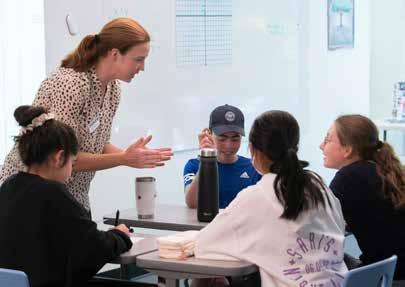
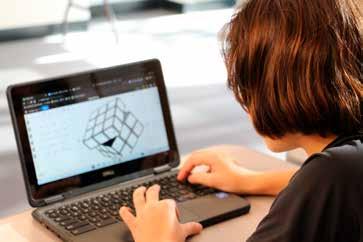
understanding of math concepts that support acquisition of flexible and creative thinking skills, which they can confidently apply across a wide range of challenges—and have fun doing it!
In contrast, some math programs emphasize only the acquisition of rote, memorized pathways. While this kind of learning may yield short term success on certain aspects of formal testing, it often comes at the exclusion of deeper understanding. Christy notes, “We sometimes see kids who have been trained in a memorized process yet lack the flexibility to extrapolate their understanding—‘If I see this, I do that. If I see that, I do this.’ But this fails them when they encounter a type of problem they haven’t seen before.”
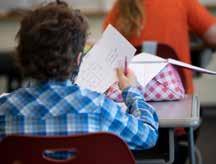
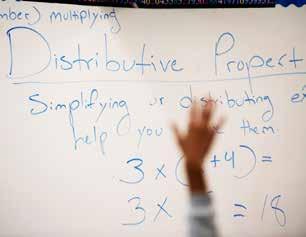
Upper Division Head Ken Rogers observes, “Often, families believe their child is ‘strong in math’ because they excel almost exclusively in computation. Yet computation is just the foundation of the real skill we want students to acquire, which is the ability to solve problems. They need to take the computational tools and apply them to different problem solving situations.”
At Park, as we teach kids to engage confidently in solving different kinds of problems, we want them to grow to enjoy the challenge of figuring it out as opposed to simply repeating a right answer. We want them to build momentum from their successes and
see intersections between their own interests and math learning. For example, Grade 8 has been using mathematical graphing formulas to draw images of things that are meaningful to them. Each student was encouraged to pick something about which they care deeply and find a way to create that, visually, using math. This year, for example, a student who loves music chose to create an image of a guitar; his connection to his creation was so deep that he found true joy in spending time to improve and perfect a beautiful image, created out of only mathematical functions. That kind of engagement is exciting—and it makes the “why” behind math tools vivid and personally valuable.
In Grade 6, students learn to perform different operations with decimals by using data collection. Each student chose a survey topic they are personally interested in, designed the survey, and collected data. The class as a whole talked about how to read survey data and understand survey bias, and students worked mathematically with the collected data to assess what the numbers might indicate. By definition, they needed to work with mathematical operations and negotiate decimals, but their focus was solidly on the process and what the information said about the project they chose. Seeing the math in things they care about makes math meaningful—and Park’s teachers try to show students that there are so many ways they can use these skills.
The current math review process centers on affirming best practices to support differentiated instruction. Students learn and develop at different rates and in different ways, and a math classroom needs to meet students where they are, and help them strengthen their skills and ability to tackle challenges. Ken Rogers observes, “These kids develop so
dynamically as they move through the Middle School years. They are still working to discover themselves as thinkers.”
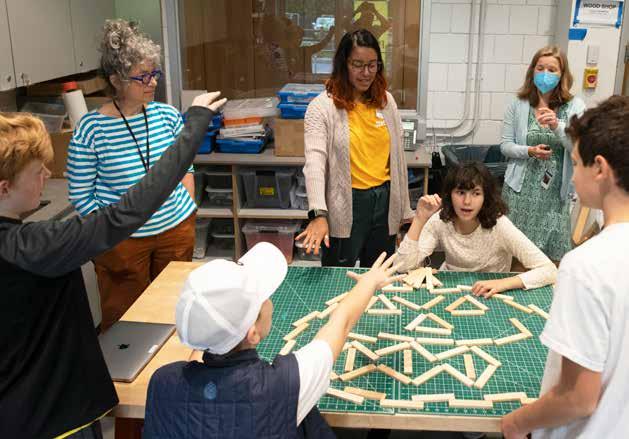
Park’s practice of placing students in “standard” and “advanced” math levels in the upper grades makes room for that ongoing discovery and for each student’s developmental timeline. The more advanced level challenges students to dig for more depth in each unit, while the standard section will spend more time supporting the fundamentals, with the same or similar challenge available to students as extensions as needed. In a well-differentiated classroom, however, the experience in both sections can be very much the same—each student having the opportunity to go for as much depth, or as much support, as they need. As a result, neither level is a defining “track.” Students who excel in the “standard” level can easily step into the
“advanced” level the following year, without missing any essential content, and students who need more support can leave the advanced section and not find themselves repeating material. The goal is to ensure that every student finds that proper balance between support, encouragement, and challenge.
What’s important is the notion of “proximal development.” That’s the zone slightly beyond what’s comfortable, where the most growth happens. When students are pushed enough to land just one step ahead of where they are comfortable—but not so far that they get frustrated or discouraged—they can embrace the idea of challenge. Embracing challenge is just as important for students for whom math comes more easily, who might otherwise “coast” in boredom. “We focus more on growth than on achievement,” Christy says. “We look for how much a student has

grown in their ability to figure things out and deepen their understanding.” Success equals growth—and it looks different for every student. Park teachers know their students well, and know what growth looks like for each of them.
And it helps to do this with a peer! Often, the best learning comes as students collaborate to solve problems, learning as much from each other as from the teacher as they work together, sharing perspectives. Ken says, “We talk about that kind of collaboration in English and Social Studies, but it’s just as relevant in math. Each of our brains thinks differently, and if we can share different ways of thinking about a problem, we help each other see things differently as well—and help each other see our own thinking—known as metacognition—and dive deeper.” Instead of hitting brick walls, our peers help us find a window, a door, or a ladder. We get to the other side.
As educators, talking about math concepts is exciting, Christy says. “We want kids to think about HOW their brains think. We need to teach them the tools that will help them use their brain to solve problems. Our job is not to tell them what to think—it’s to teach them how to think so they can find their own understanding.”
Ideally, every student will say “I love math,” knowing that even if it’s a little hard, they can figure it out. But, even if they don’t say “I love math,” we want them to be proud of themselves because they tried something hard, and grew as a person. They grew as learners.










